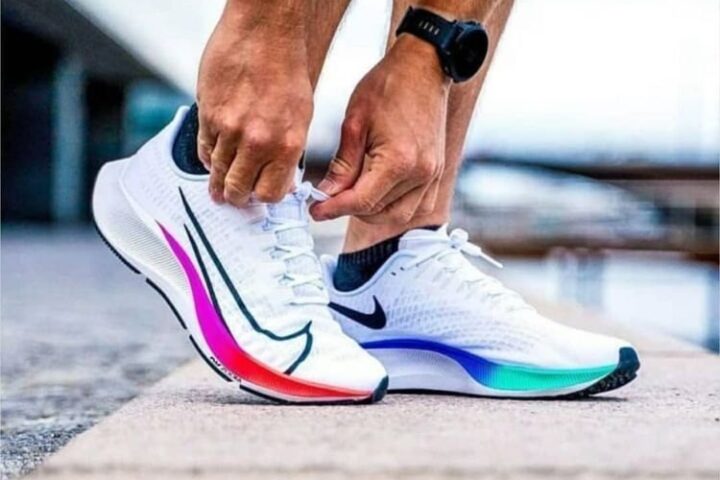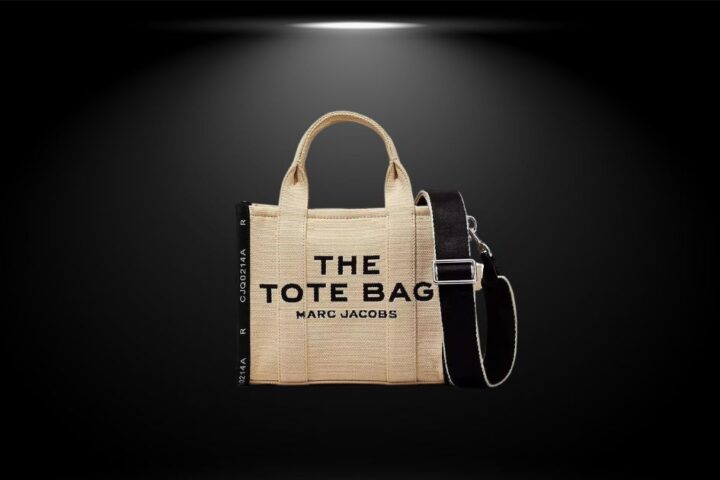INTRODUCTION
Trademarks are the logo, shape or a phrase which distinguishes one thing or product from one other. Trademark allows the owner to use names, symbols or legally registered word/s. Trademark also protects; the product configuration (customization of a product) and trade dress (particular kind of visual representation that depicts the source of the products e.g. shape of the CocaCola bottle) and also service marks (Mark given to a service provider e.g. MSU).
For any trademark to be competent for registration:
- It must be distinctive, that is, it must be able to identify goods originating from somewhere else
- It must not include exclusively marks which designate the quality, quantity, purpose, etc. of goods or services
- It must not encompass marks which have become customary/established practices in trade
Trade dress is a sibling of trademark, which is also correlated with dilution and passing off. It refers to the colours and combination of colours, lines, patterns on the dress that form a brand value for that product. It culminates in or leads to a visual impression that serves as an indicator of source, similar to a word or design mark. For example, even without the Chanel label on it, the Chanel No. 5 bottle or the Hermès Birkin bag from its appearance or design are instantly and clearly recognisable
PROTECTION OF TRADE DRESS IN INDIA
One of the most important or key components of the Indian trade mark regulation is distinctiveness, which also applies to trade dress. A trade dress ought to be distinguishable, that is, consumers must be able to recognise it. Not only registered and unregistered trademarks, but trade dress is also protected by the trademark law or regime. Even before 2003, Indian courts recognised the notion of trade dress and on several occasions have pronounced decisions on the basis of the product’s trade dress component. The Supreme Court has laid down and described trade dress as a product’s “total image and overall appearance,” adding that “elements like shape, size, graphics, texture, colour and/or its combinations, and even special sales strategies may be included.”
PROTECTION OF TRADE DRESS IN USA
Section 43(a) of the Lanham Act, which protects “any name, term, word, symbol, device, or any combination thereof” used in the context of or on any goods or services, or any goods’ container, is the cornerstone of protection of trade dress in the United States. Hence, it allows for civil litigation or action against anybody who uses any word and/or its combinations, name, term, device or symbol, linked with another’s goods or services so as to cause deception or confusion in regards to the origin of those goods or services.
The two basic grounds for granting trade dress protection in the United States are distinctiveness and non-functionality. In order to show infringement, a plaintiff must allege and substantiate the three components listed below:
- The plaintiff possesses a trade dress that is protectable and consists of a clearly specified combination of features or design that is either intrinsically distinctive or has acquired distinctiveness through secondary meaning, i.e., buyer identification of the symbol with the source.
- The trade dress has the potential to cause confusion about the source, sponsorship, relationship, or connection. This aspect is not in regards to whether the defendant’s trade dress or package is identical to the plaintiff’s; rather, it is about how similar the overall image or impression is.
- If the trade dress is not registered, the plaintiff must show that it is not functional. In a case where the trade dress is registered, the registration serves as an assumed and credible evidence of non-functionality, and the burden of substantiating functionality falls on the defendant
If the aforementioned three criteria are met in terms of trade dress violation or infringement, injunctive relief (an order of the court prohibiting one party from infringing or violating on another’s trade dress) and/or monetary damages (compensation against losses suffered by the injured party) are the possible remedies
In the case of Vision Sports, Inc. v. Melville Corp the United States Court of Appeals some distinct characteristics of trade dress was noted by the Ninth Circuit which included: “Trade dress protection is broader in scope than trademark protection, both because it protects aspects of packaging and product design that cannot be registered for trademark protection and because evaluating trade dress infringement claims compels the court to concentrate on the plaintiffs entire selling image, as opposed to the narrower single facet of trademark”
Thus, trade dress comprises of a broader range of intellectual properties, and trade dress protection extends to themes or topics as concrete and distinct as ornamental tiles and as intricate as restaurant service. Furthermore, trade dress includes and covers a variety of these abstract and concrete subjects, and may also cover a selling approach apart from a selling image.
WHAT DOES VIRTUAL TRADE DRESS MEAN?
When a court grants trade dress protection to the same commodity that consumers value, virtual trade dress occurs, whereas real trade dress has little or no intrinsic value. Virtual trade dress only refers to other qualities incidentally, if at all, and consumers value it for its own qualities and essentially for the aesthetic experience it provides, whereas real trade dress is valued primarily for revealing otherwise hidden qualities of a good or service. As a result, virtual trade dress offers a particularly appealing technique of monopolising the “look and feel” of virtual environments and computer interfaces, and raises severe concerns since it violates intellectual property rights in an inefficient and unjustifiable manner. The contrasts between real and virtual trade dress drive their meanings to extremes, but in the real world, the line separating them blurs a little. Virtual trade dress and real trade dress remain distinct, just as the appearance of dawn and dusk does not indicate that night equals day and the theoretically pure definitions serve in categorising the fuzzy facts that insinuate actual practise.
CASE LAWS IN REFERENCE TO VIRTUAL TRADE DRESS
The case Hartford House, Ltd. v. Hallmark Cards, Inc. stands out as the best example of a court establishing virtual trade dress. Hartford House, along with others, created and distributed greeting cards under the name of Blue Mountain Arts and Blue Mountain sued competitor Hallmark Cards (Hallmark) for infringement of the trade dress of two of Blue Mountain’s card lines- Watercolor Feelings and AireBrush Feelings. The district court discovered fundamentally distinct and extremely uniform features in these two card lines, features which when combined in an overall appearance might lead the consumers to recognize and ascribe or attribute to Blue Mountain. The same was sustained and confirmed by the United States Court of Appeals for the Tenth Circuit. “A two-fold card with poetry on the first and third pages, unprinted areas on the inside three panels, a high quality, textured, and uncoated art paper for the cards, lengthy poetry written in free verse, typically with a personalised message, the appearance of hand-lettered calligraphy on the first and third pages with the first letter of the words often enlarged” were some of the fundamentally distinct and extremely uniform features which qualified as virtual trade dress owing to the fact that it represents the very good that consumers appreciate, value and cherish. While a competitor would not be required to forego or avoid copying all of these aspects in order to avoid infringing on Blue Mountain’s alleged trade dress, the scope of Blue Mountain’s rights remained unclear. In any case, the aforementioned characteristics, taken together or separately, qualify as virtual trade dress and form the very items that consumers appreciate and value and if Blue Mountain did not sell the features covered or protected by its trade dress claim, it would make no profit and lose money. Such virtual trade dress, on the other hand, did not fall under the purview of real trade dress law. The district court in Hartford House adopted or used the conventional trademark structure to evaluate trade dress infringement. It required Blue Mountain to demonstrate that its trade dress was (1) distinct, (2) non-functional, and (3) likely to be confused with the defendant’s trade dress by consumers. However, the court erred by failing to recognise the virtual trade dress at issue in each of these steps. As a result, this case is an egregious example of how virtual trade dress can violate established intellectual property categories and wreak havoc on traditional legal principles.
In the case of Romm Art Creations Ltd. v. Simcha International, Inc a court established virtual trade dress rights by providing trade dress protection to actual products that consumers cherished and valued. The plaintiff, Romm Art, was granted a licence to sell limited edition posters and editions based on or rather copied works from Israeli artist Itzchak Tarkay’s “Women and Cafes” collection. Defendant Simcha allegedly distributed limited editions and posters of artist Patricia Govenzensky’s work, which allegedly mirrored Tarkay’s work in regards to the colour and shading patterns, physical attributes, figure placement, attire of women shown, and depiction of women reclining. Simcha, the defendant, was sued for trade dress infringement and Romm Art accused him of distributing art that was slavishly similar to and a derivative of Tarkay’s work. No objection was raised by Simcha when the magistrate concluded that the Lanham Act provides relief or offers remedy for infringement of the trade dress of commercial reproductions of specific art works. This turned out fatal for the defence, and the Romm Art court, relying primarily on Hartford House, declared the trade dress non-functional and maintained the magistrate’s conclusion of secondary meaning and possibility of confusion.
The two trade dress cases with the most direct and immediate application to virtual environments – Fuddruckers, Inc. v. Doc’s B.R Others, Inc. and Two Pesos, Inc. v. Taco Cabana, Inc. involve restaurant decor and design claims. The reason for this seemingly strange coincidence is that restaurants sell dining experiences rather than just food. They seek or rather aspire to develop and provide artificial environments that are both useful and entertaining for their customers. In each of these cases, the plaintiffs, Fuddruckers and Two Pesos, were awarded the virtual trade dress rights to their restaurant services; albeit, unlike Romm Art and Hartford House, this virtual trade dress came intermingled with the real thing.
DRAWBACKS OF VIRTUAL TRADE DRESS
Under a cost-benefit analysis, virtual trade dress does not fare well. Rather than adding value to a good, it does little or nothing to minimise the cost of determining the source or affiliation of it. Protecting virtual trade dress, on the other hand, comes at a significant cost. Furthermore, because virtual trade dress has such murky borders, it will be impossible to define the precise scope of claims to it, making it difficult to assign value to infringement claims and, as a result, settle litigation. Thus, rather than stimulating adoption of new trade dress, the dispersed nature of virtual trade dress and the difficulties in resolving infringement claims will discourage or prevent it and threaten to suffocate it.
To be legally protected from duplication, a mark or trade dress must either have inherent distinctiveness (by being suggestive, fanciful, or arbitrary) or acquire it by secondary meaning. The Abercrombie scale, on the other hand, disqualifies virtual trade dress as intrinsically nondistinctive because virtual trade dress is unable to distinguish itself from the good/service that consumers value. Virtual trade dress also goes against the functionality doctrine’s policy.
Because it crosses established boundaries and usurps the traditional roles of copyright, trademark, and patent law, virtual trade dress also jeopardises the coherence of federal intellectual property legislation. Virtual trade dress is not only unwelcome, but may also be unconstitutional as a result of its influence. This adds to the list of reasons for challenging the legality of virtual trade dress, in addition to those arising from its violation of trademark law.
CONCLUSION
While virtual reality opens up new and exciting realms not only for people but also for legal theories, virtual trade dress poses problems right now. Despite its track record in high-profile cases, virtual trade dress is on uncertain foundation and shaky ground. None of the economic justifications that underpin traditional trade dress rights apply to intrinsically valuable trade dress, i.e. virtual trade dress, and it also fails to meet the usual legal standards of non-functionality and distinctiveness. While such trade dress appears unwise and harmful from a policy standpoint, it may also be rendered unconstitutional from a legal standpoint. As a result, virtual trade dress is not only an anomaly in trademark law; if current technological and legal trends continue, virtual trade dress has the potential to become a very real problem
Author: Saloni Chitlangia (Intern)










